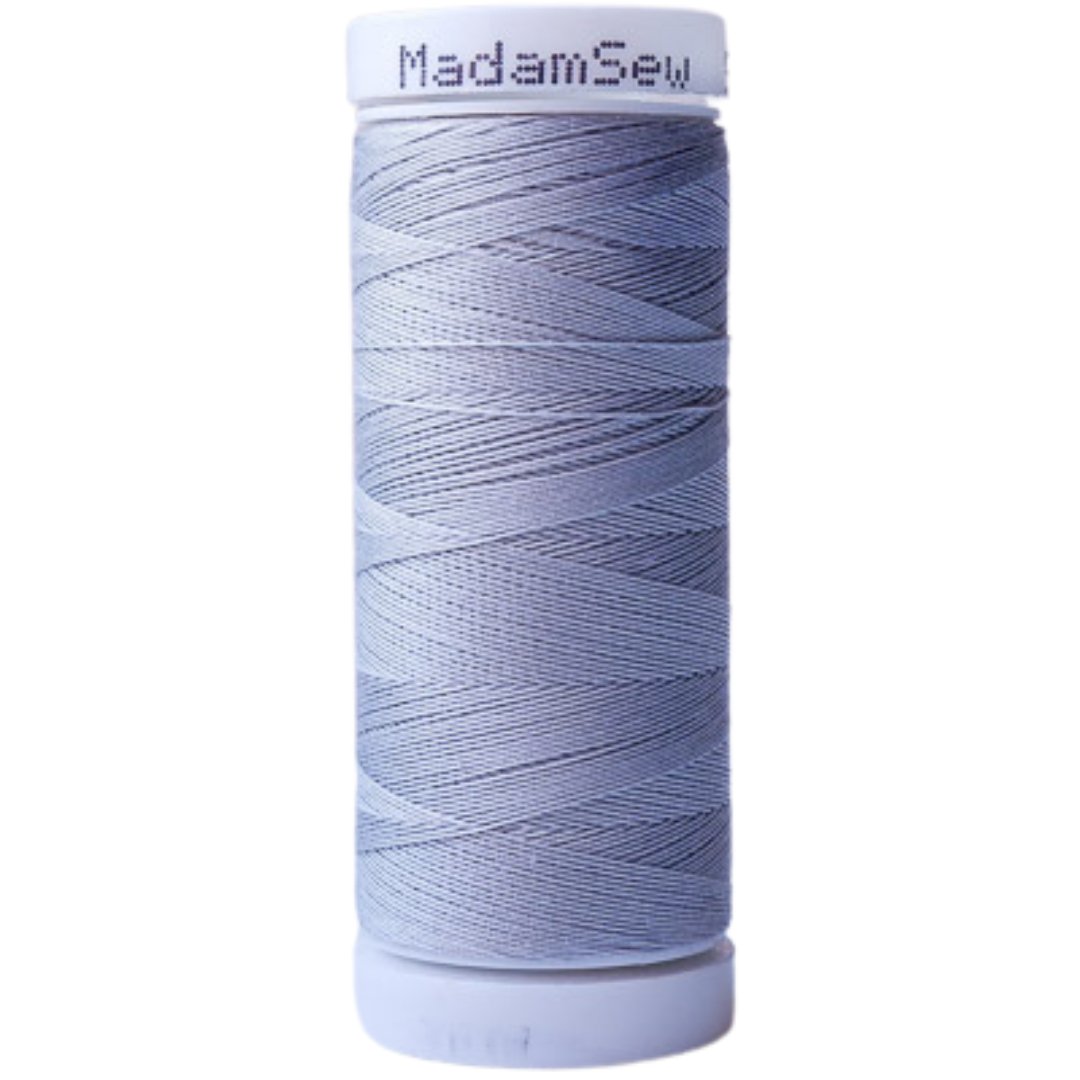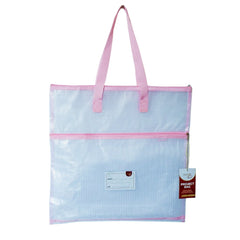Use Your Seam Ripper Like a Pro
If you sew, you rip. Period.
Are you a "zen ripper" or more like me... :-) ?
Last week, I practiced the art of making and correcting mistakes, and I gathered researched seam ripping... or unpicking, because they aren’t always seams, the sewing mistakes I make. Taking out stitches is an unavoidable evil. If you sew, you must learn how to use a seam ripper.
There is no right or wrong way to take out those unwanted stitches, as long as you don't damage your fabric, but there are different approaches. I’ve seen and used less efficient ways and more risky ways, and depending on the fabric and the stitches, I use different methods of unpicking. I want to show you the options and give you a couple of tips for ‘unpicking’ with a seam ripper.
What is a Seam Ripper
First, it’s important to know your tool. The seam ripper: Helping mistake-makers of all kinds 🙂
A seam ripper is designed to do the job of removing unwanted stitches safely. One point of a seam ripper is sharp while the other has a ballpoint tip which prevents unintentional injuries and prevents ripping the fabric.The cutting edge of the ripper is the curved pit between the point and the ballpoint. With the sharp point you can go underneath the stitches. The ballpoint can slide against the fabric without damaging it.
Some use special shears or razors to unpick stitches, but I just use a good old seam ripper. I’ve come across a whole range of different seam rippers, with nice big handles, in wood, gold, you name it. We even have a lighted seam ripper in our store that comes in handy when you have poor lighting or your eyes need that little extra to see those tiny stitches. I’m still managing with the basic tool and I have four of them, a little set. I like to have more than one seam ripper because I hate it when I have to start a search quest for my tool when I make a mistake. Always having one at hand, makes it less frustrating. Some sewists even wear a seam ripper around their neck. Do you?
The Basics of Seam Ripping
Whenever you need to unpick some stitches, start at one end of the stitches and work from the bobbin side. Insert the sharp tip of the seam ripper between the thread and the fabric, sliding the seam ripper in sideways. Gently pull the seam ripper upward away from the fabric to cut the thread. Those are the basics. This step is the same for all seam ripping. You need to undo the backstitches one by one, if you have any backstitches to unpick, of course. If you’re unpicking in the middle, just mark the start and the ending by unpicking the ends first.
And don’t forget, always slide the seam ripper in sideways to avoid cutting your fabric.
Seam Ripping Methods for Regular Stitches
After you’ve removed the first couple of stitches, here are a few methods you can use to remove more stitches. The best way really depends on your fabric…
Remove Stitches One By One
You can continue to unpick stitches one by one, like you have to do for removing backstitches. This way you can remove every stitch. It is very time consuming and you’ll end up with a lot of small threads on the top if you cut every stitch. You can also cut the first stitches and then pull out every stitch with the point without cutting them.
Most of the time the thread will stay intact, but it may break. This way you’ll end up with less small threads to clean up afterwards.
The tugging is not ideal for frail fabrics or very tight or small stitches.
Remove Every 4th Stitch
For seams, hems, decorative stitches, and stitches that are not on the edge, start unpicking on the bobbin side. Cut a stitch, skip three or four stitches and cut again, continue like this. Turn the fabric over to the top thread side. Place the seam ripper under the thread and simply lift the thread of the fabric.
Pull the Thread
This technique only works when you’re undoing a seam or a hem.
To open up the fabric and slice the stitches, you gently pull the fabric apart and tug a little. The thread will loosen and you just need to cut every four to five stitches. Use the tip of the seam ripper to pick up the stitches in the seam line and cut them. Pull the seam-ripper away from the fabric rather than toward the remaining stitches. It takes more time than plowing the seam ripper through the stitching, but it is much less likely to cut the fabric.
Be careful with thin fabrics because they can stretch. If the fabric is very frail, you can’t pull your fabric too much or you’ll ruin it.
Ripping the fibers of your fabric is always a risk when you’re unpicking. Some say the risk is greater when you’re doing it flat.
Quick Rip, Plowing
This technique is only for undoing seams or hems.
You put the ripper between the fabrics, ballpoint down, and you cut all the stitches by pushing the ripper along the crease.
If you want the fastest way, you’re confident and not afraid of taking risks, you can do it this way.
For me this is a great way to tear your fabric, as I did.. maybe it’s because I’m not experienced enough… so this is not the way for me, although it’s always tempting to use this method. And with some practice, it might be perfect for you.
Some hold the stitching vertically and let gravity help them.
To be in complete control, you need three hands for this technique (one to hold the seam ripper, one to move the fabric and one to keep the fabric taut). By securing your fabric underneath the presser foot of your sewing machine or pinning it down on your iron board, you won’t need that third hand any more.
Here you see the same technique, with the fabric pinned to my iron board.
You will have some more cleaning up to do because all the stitches are cut.
How to Remove Other Types of Stitches
I’m not trying to be complete and show you how to unpick every specific stitch. Most of the time you can use the methods I explained above. I’ll go into serger stitches and three kinds of industrial stitches, because unpicking those require a specific technique.
Serger Stitches
1. Start on the right side. Release the thread in the middle if you have a four thread overlock stitch. This is the stay stitch, or the fourth thread. Pull that out. If you start on the wrong side, you will pull the threads together in a knot.
2. Then, grab hold of the stitch between the V. The white thread in the four thread picture on the right, the green one in the three thread picture on the left. Give those threads a pul., Grab them and pull them all the way through.
3. Then the serger loops will come off easily.
Industrial Stitches
You can use a seam ripper to remove industrial stitches, too. For example, the dense stitches you see on the side seams of jeans. This is a good skill to know if you want to alter store-bought clothes or you use any industrial sewing machines.
Chain Stitches
Unpicking chain stitches is really easy. On one side it looks like a normal stitch, and the other it is rather thick. Start on the thick side.
Always unpick the start and the end first, like a mark, to make the unraveling stop at a certain point. Always go from left to right, thick side facing.
Blind Stitches
To undo blind stitches, go to the bobbin side, cut the thread, grab hold of it, and pull it. You have to find the loop where the thread has been caught in, once it’s released from the loop, it unravels. And when the thread is stuck again, you just flick it out of the loop again and pull.
Cover Stitches
The key to removing these stitches is figuring out the correct direction you will start unpicking. You want to start unpicking on the side where you stopped stitching/sewing. I can tell this is where I ended my stitches because the tail threads are pulled to the back/wrong side of my garment. The tail threads on the right side are still on top of the sleeve, thus this is where I started sewing and NOT where I want to start unpicking.
Cut a stitch and pull those tail threads to the front. Once the tail threads are on the right side of the fabric, you then carefully release a few stitches. Don’t cut any of them. Turn your fabric over to the wrong side and you will see the looper thread will be the only one on this side. Grasp this tail and give a gentle tug/pull.
Always make a cut in the threads at the start and the end, like a mark. You don’t want to unpick too much, do you?
Extra Tips for Using a Seam Ripper
I hope this post has been helpful to you and that you can feel confident using a seam ripper. Here are some more tips:
- If you get little holes from the needle, rub them with your fingernail to erase those needle points, or gently move the fabric around, pulling on the bias a little bit and the holes will disappear.
- Use scotch or duck tape to clean up the little threads left from ripping out stitches really fast.
- If a cut in the fabric does happen and it is not in an area that is visible, immediately use fusible lightweight interfacing on the wrong side of the fabric with the cut closed as closely as possible. Waiting to do this step can cause the edges of the cut to fray and the cut will always be visible. The cut will weaken the fabric no matter what, but in most cases, the fusible interfacing can mend the cut if it is inside the item you are sewing.
- Rolled hems: I don’t undo a thin rolled hem, I just cut a little strip off and sew it again.
- Seam rippers are not ‘forever tools’. They should be replaced regularly. You will feel it when your ripper isn’t sharp anymore, especially with the plowing technique. If you haven’t tried it yet, Madam Sew has a lighted seam ripper to help you see tiny stitches better. And we also have a sharp seam ripper with a big comfortable handle.
With these techniques and tips, you can take a step towards zen seam ripping, if that exists :-)
Unpicking stitches from knit fabrics or free motion embroidery is the most frustrating, especially when they are really tiny. That is so difficult and time consuming. Do you have any tips for making this quicker and not damaging the fabric? I'd love to know how you tackle this problem!
If you want to know how to sew properly and get more tips and tricks to avoid making too many mistakes, you can read through our 'sewing guide for beginners'.
The final good advice I can give you for this is stay cool, make yourself comfortable, take a glass of wine, some chocolate, put your favorite music on and forget the world around you :-)
An
Sewing aficionado and keen sewing blogger/vlogger.
An is Madam Sew’s dedicated creative brain, writing and filming insightful, inspirational content for the sewing enthusiast.
PS: Do share this blog post - just give clear credit to MadamSew, including our original blog post link. Thanks!


















